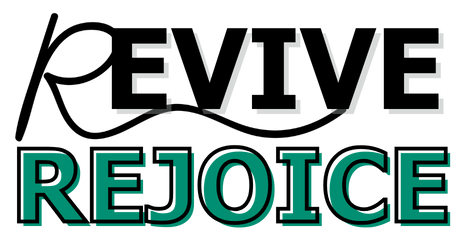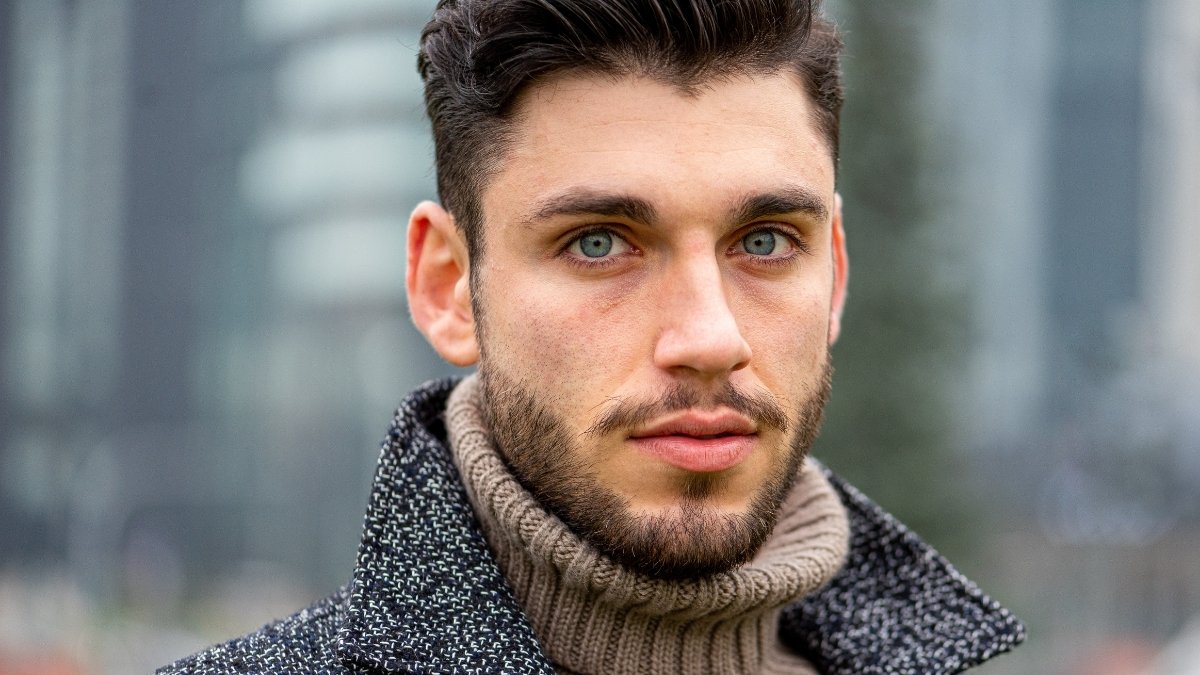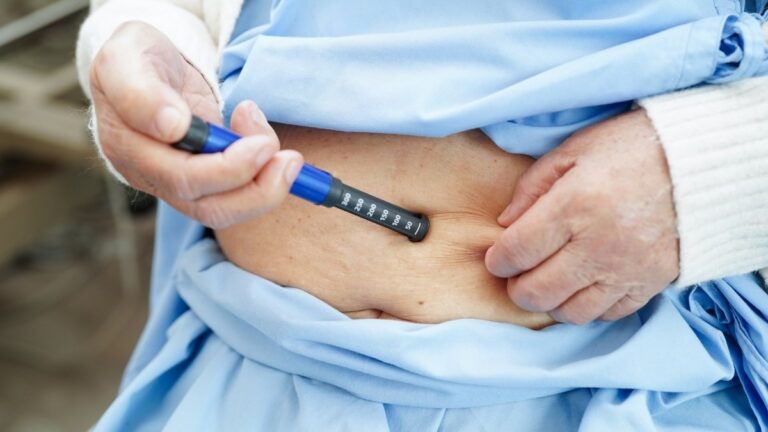15 Proven Techniques to Boost Your Eye Health Naturally After 50, According To Ophthalmologist
If you’ve noticed yourself holding your phone at arm’s length or squinting at restaurant menus, you’re experiencing what affects over 1.8 billion people worldwide: age-related vision changes.
After 50, the eye’s natural lens stiffens, tear production decreases, and cellular damage accumulates, leading to presbyopia, dry eyes, and increased risk of macular degeneration and cataracts.
But there’s genuine hope ahead for you. In this comprehensive guide, you’ll discover 15 ophthalmologist-recommended, scientifically-backed methods to improve eyesight naturally after 50.
These proven eye health tips can naturally support eye health, slow vision decline, and help maintain clearer sight for many years to come.
How to Keep Your Eyes Healthy After 50: A Complete Guide That Actually Works
Your vision is changing. Maybe you’re holding your phone further away to read texts. Or squinting at restaurant menus in dim light. You’re not imagining it.
👁️ Daily Eye Health Routine
Simple habits to protect your vision every day
Morning
- Take AREDS2 supplement with breakfast
- Apply sunglasses before going outside
- Set 20-20-20 reminder on phone
Throughout Day
- Follow 20-20-20 rule
- Drink water regularly
- Eat one eye-healthy food
- Check screen positioning
Evening
- Use warm lighting for reading
- Apply artificial tears if dry
- Plan 20-minute walk for tomorrow
- Keep bedroom dark
After 50, your eyes face new challenges. But here’s the good news: you can do something about it. This guide shows you exactly how.
1. Why Your Eyes Change After 40 (And What You Can Do About It)
Your eyes aren’t broken. They’re just getting older. Here’s what happens inside your eyes as you age.
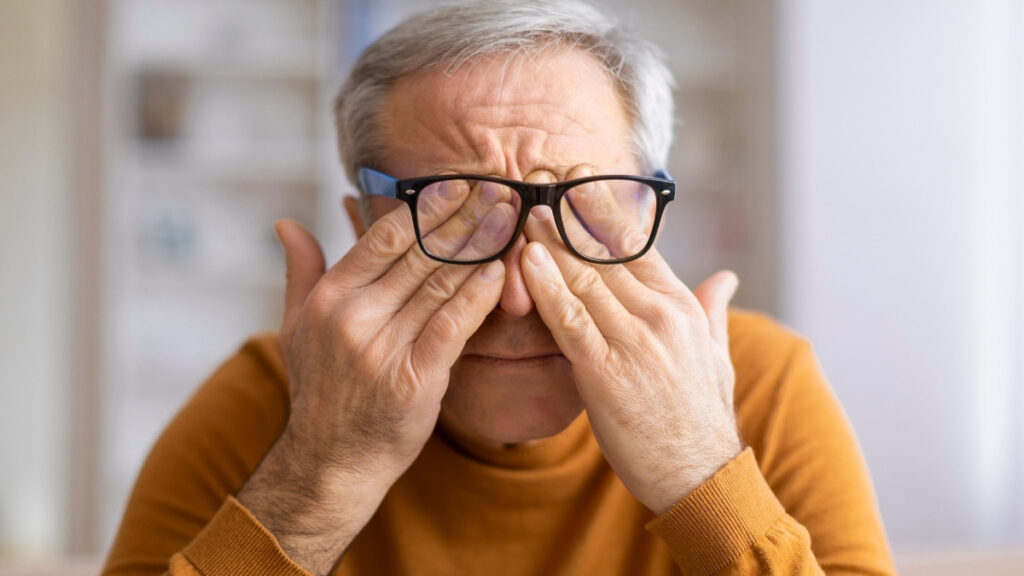
The lens in your eye gets stiffer after 40. Think of it like a rubber band that’s been sitting in a drawer for years. It doesn’t stretch as easily anymore. This causes presbyopia – the reason you need reading glasses.
Your tear glands also slow down. After menopause, tear production drops by 60%. This leads to dry, scratchy eyes that feel like sand.
Free radicals damage your retinal cells over time. It’s like rust forming on metal. Blood flow to your eyes also decreases, which means less oxygen and nutrients reach the cells that help you see.
The numbers are staggering. The World Health Organization says 1.8 billion people will have presbyopia by 2030. But don’t panic. You can slow these changes.
What you can do right now:
- Get a comprehensive eye exam to establish your baseline
- Start using preservative-free artificial tears if your eyes feel dry
- Consider prescription reading glasses instead of drugstore ones for better vision
2. How to Protect Your Eyes from Screen Damage (The 20-20-20 Rule Actually Works)
You spend about 7 hours a day looking at screens. Your eyes weren’t designed for this. Computer vision syndrome now affects 97% of people who use screens regularly.
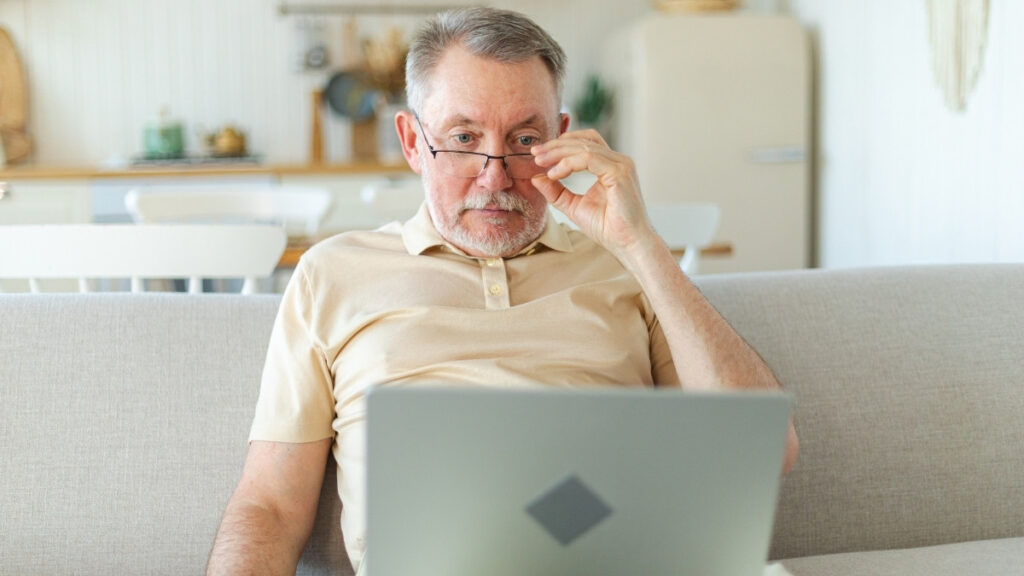
Here’s what screens do to your eyes. You blink 50% less when staring at a screen. Less blinking means your tear film doesn’t spread evenly. Your eyes dry out.
The 20-20-20 rule fixes this problem. Every 20 minutes, look at something 20 feet away for 20 seconds. This gives your focusing muscles a break and reminds you to blink.
Set up your screen correctly:
- Keep it 20-28 inches from your face
- Position the top of your screen 15-20 degrees below eye level
- Use a document holder next to your screen to avoid head turning
- Adjust brightness to match your surroundings
Blue light might disrupt your sleep, but the jury’s still out on eye damage. Don’t spend hundreds on blue light glasses. Focus on taking breaks instead.
Try these blinking exercises:
- Close your eyes slowly and hold for 2 seconds
- Do this 10 times every hour
- Look up, down, left, and right without moving your head
- Focus on something far away, then something close
Your neck and shoulders matter too. Tight muscles can reduce blood flow to your eyes. Roll your shoulders back every hour.
3. The Best Foods for Your Eyes (Based on Real Science)
The AREDS2 study changed everything we know about eye nutrition. This massive study followed 4,203 people for 5 years. The results were clear.
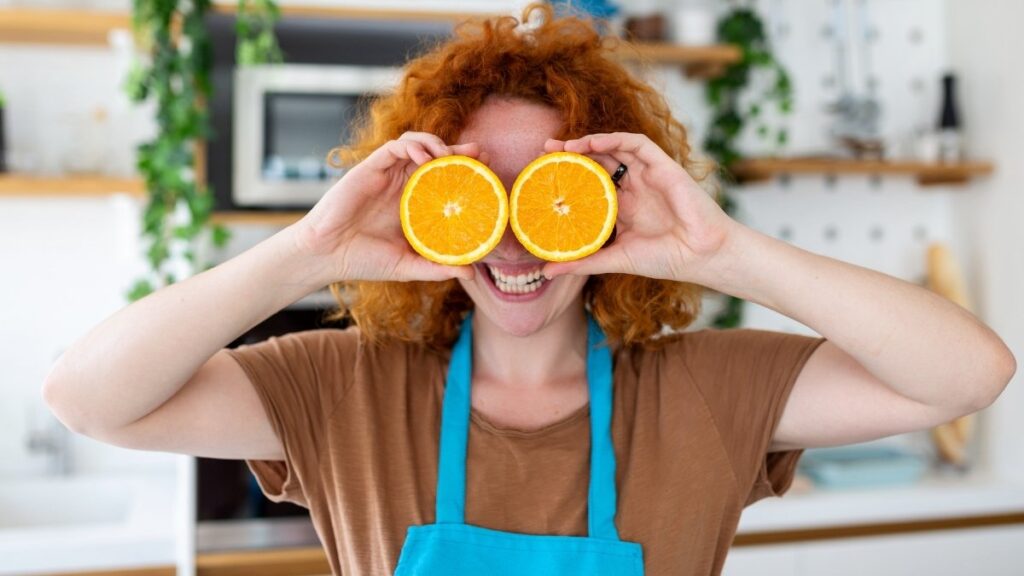
Taking the right nutrients can reduce your risk of age-related macular degeneration (AMD) by 43%. Here’s what works.
Lutein and zeaxanthin are like sunglasses for your retina. They filter harmful blue light. You need 10-20mg daily. Harvard research shows that just 6mg of lutein lowers AMD risk by 43%.
Get lutein from these foods:
- Spinach (1 cup cooked = 20mg)
- Kale (1 cup cooked = 18mg)
- Egg yolks (2 eggs = 0.5mg)
- Corn (1 cup = 2.4mg)
Omega-3 fatty acids keep your retina healthy. Your brain and eyes have the highest concentration of omega-3s in your body. You need EPA and DHA, not just any omega-3.
Best omega-3 sources:
- Salmon (3.5 oz = 1.8g)
- Sardines (3.5 oz = 1.7g)
- Walnuts (1 oz = 0.3g)
- Flaxseeds (1 tbsp = 0.6g, but your body doesn’t convert it well)
The AREDS2 formula includes:
- Vitamin C: 500mg daily
- Vitamin E: 400 IU daily
- Zinc: 25mg daily
- Copper: 2mg daily (to prevent zinc-induced copper deficiency)
Should you take supplements? Try food first. If you can’t eat fish twice a week or leafy greens daily, then consider supplements. But talk to your doctor first. High-dose zinc can interfere with copper absorption.
Foods that might hurt your eyes:
- Processed meats high in nitrates
- Sugary drinks that spike blood sugar
- Trans fats that increase inflammation
4. Simple Exercises That Actually Help Your Eyes
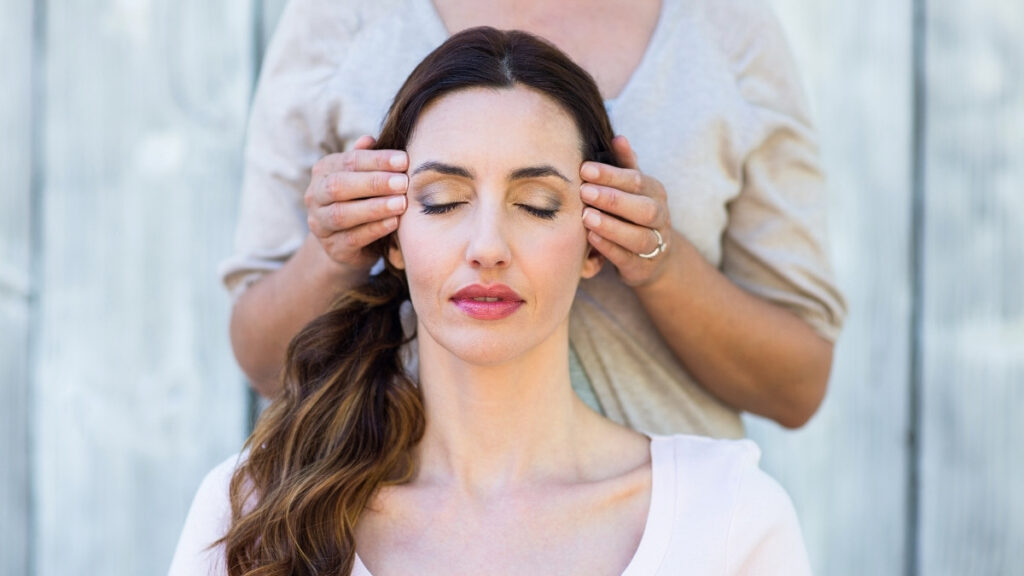
Let’s be clear about something. Eye exercises won’t fix nearsightedness or farsightedness. No amount of eye pushups will let you throw away your glasses.
But exercises can help with eye strain and circulation. Here’s what actually works.
Cardiovascular exercise helps your eyes. Walking just 20 minutes daily improves blood flow to your retina. Better blood flow means more oxygen and nutrients reach your eye cells.
A study of 41,000 runners found that those who ran the most had 19% lower cataract risk. You don’t need to become a marathoner. Just move more.
Focus-shifting exercises might help digital eye strain:
- Hold your thumb 6 inches from your face
- Focus on your thumb for 5 seconds
- Focus on something across the room for 5 seconds
- Repeat 10 times
The evidence for these exercises is limited. But they don’t hurt, and they remind you to take screen breaks.
Neck and shoulder stretches help more than eye exercises:
- Slowly roll your shoulders backward 10 times
- Gently turn your head left and right
- Tilt your head toward each shoulder
- Do this every hour at your desk
What doesn’t work: Palming, figure-8 eye movements, and “vision therapy” apps that claim to improve your prescription. Save your money.
5. Why Smoking Destroys Your Vision (And Why Quitting Helps)
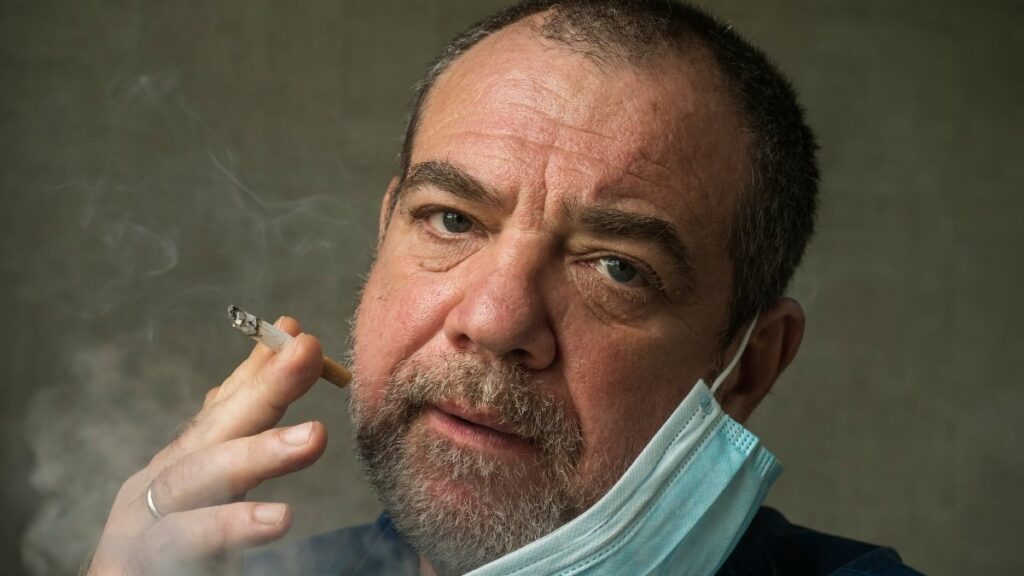
Smoking attacks your eyes in multiple ways. Current smokers are 2-4 times more likely to develop AMD. They also have 2-3 times higher cataract risk.
Even secondhand smoke doubles your AMD risk. Smoking speeds up AMD development by 5.5 years on average. That’s years of vision you could lose.
How smoking hurts your eyes:
- Reduces oxygen in your blood
- Increases free radical damage
- Damages blood vessels in your retina
- Reduces antioxidant levels
The good news about quitting: Former smokers have only slightly higher risk than people who never smoked. Your eye disease risk drops quickly after quitting.
If you smoke, quitting is the single best thing you can do for your eyes. Talk to your doctor about nicotine replacement or prescription medications that can help.
6. How to Shield Your Eyes from UV Damage Every Day
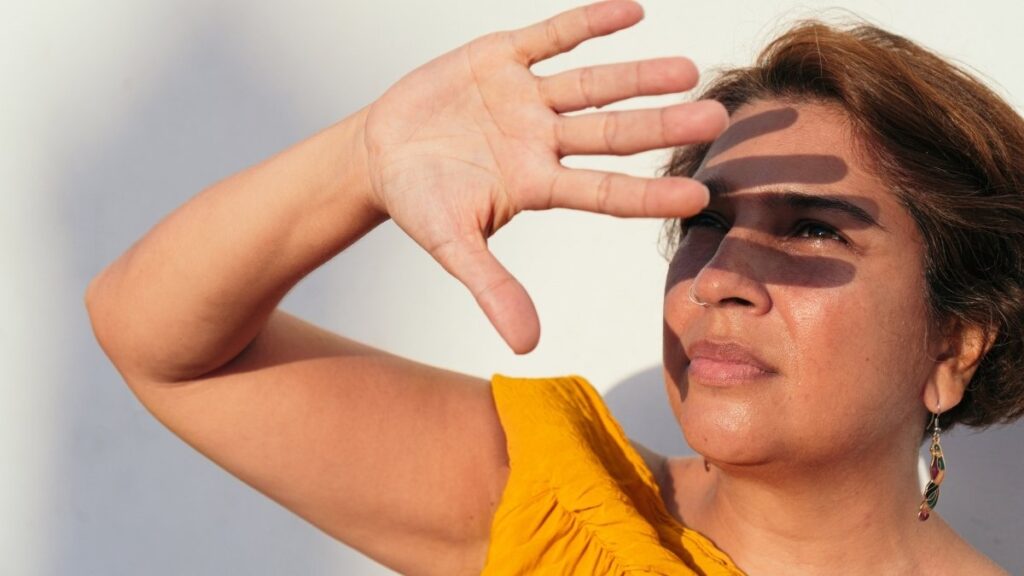
UV damage adds up over your lifetime. It’s like getting a sunburn on your eyes, but slower. Cumulative UV exposure leads to cataracts, pterygium (growths on your eye), and possibly AMD.
Buy sunglasses that block 99-100% of UVA and UVB rays. The sticker price doesn’t matter. A $20 pair from the drugstore can protect as well as $200 designer frames if they have proper UV coating.
Wraparound styles work best. They block UV rays coming from the sides. Regular sunglasses only block about 50% of UV rays because light sneaks around the frames.
Wear a wide-brimmed hat too. It provides extra protection that sunglasses miss. A 4-inch brim blocks 50% more UV than sunglasses alone.
Don’t skip cloudy days. Up to 80% of UV rays penetrate clouds. Snow, water, and sand reflect UV rays back at your eyes, doubling your exposure.
Polarized lenses help with glare but don’t add UV protection. Make sure your polarized sunglasses also have UV coating.
7. How Sleep Affects Your Eye Health (The Connection You Didn’t Know About)
Your eyes repair themselves while you sleep. Getting 7-9 hours of quality sleep is crucial for eye health. Here’s why.
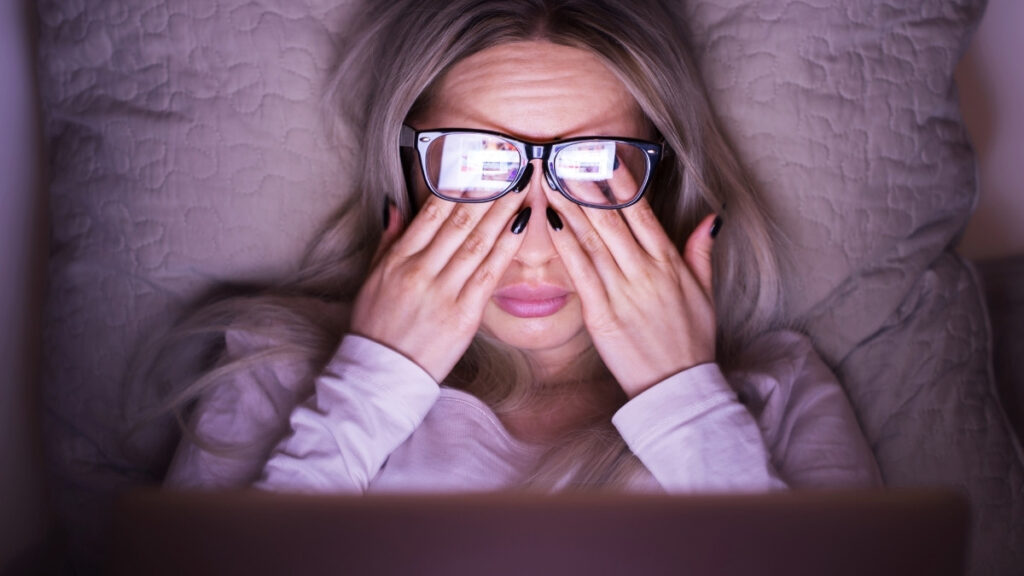
REM sleep boosts tear production. During REM sleep, your tear glands work overtime to restore your tear film. Sleep deprivation reduces tear production by 20-30%.
Your sleep position matters. Sleeping on your stomach or side can increase eye pressure. If you have glaucoma, sleep with your head elevated on extra pillows.
Sleep apnea increases glaucoma risk. People with sleep apnea have lower oxygen levels at night. This can damage the optic nerve. If you snore loudly or feel tired after a full night’s sleep, get tested.
Create the right sleep environment:
- Keep your bedroom completely dark to boost melatonin production
- Use blackout curtains or an eye mask
- Keep the temperature cool (60-67°F works best)
- Remove all screens at least 1 hour before bed
If you have dry eyes, use a humidifier in your bedroom. Dry air makes dry eyes worse overnight.
8. The Simple Way to Keep Your Eyes Hydrated
Dehydration affects your tear quality before you feel thirsty. Even mild dehydration can make dry eyes worse.
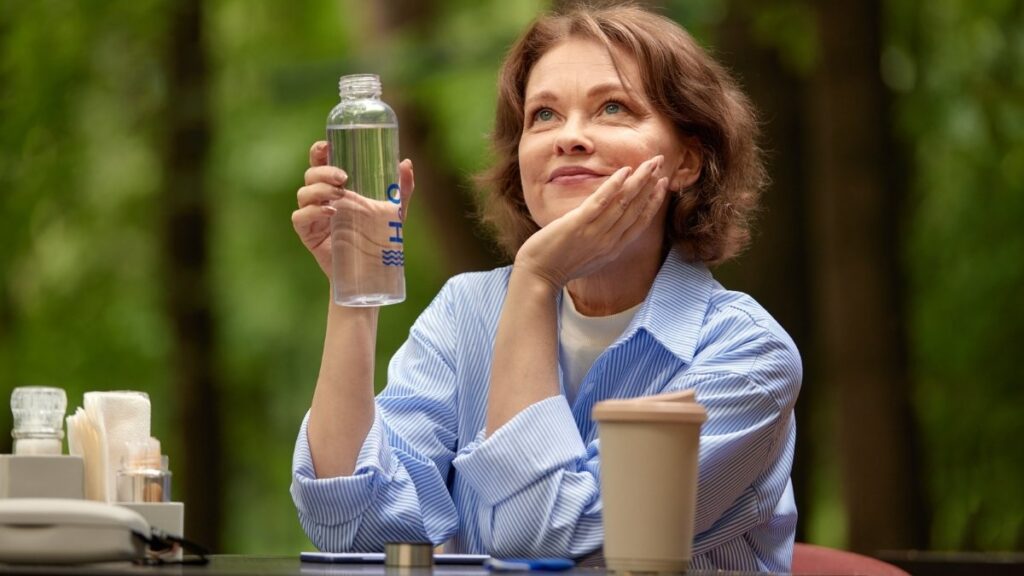
Drink water throughout the day, not just when you’re thirsty. Your tears are 98% water. When you’re dehydrated, your tears become more concentrated and less effective.
Check your home’s humidity. Indoor air should be 40-60% humidity. Dry air pulls moisture from your eyes. Use a humidifier during winter months when indoor air gets very dry.
Signs your eyes are dehydrated:
- Burning or stinging sensation
- Feeling like something’s in your eye
- Blurry vision that clears when you blink
- Eyes that water excessively (your body’s overreaction to dryness)
When to use artificial tears: If drinking more water doesn’t help within a week, try preservative-free artificial tears. Use them before your eyes feel dry, not after.
Omega-3s improve tear film stability. They help your tears spread evenly and evaporate less quickly. Fish oil supplements or eating fish twice a week can help.
9. How to Set Up Perfect Lighting for Your Eyes
Bad lighting forces your eyes to work harder. This leads to fatigue, headaches, and eye strain.
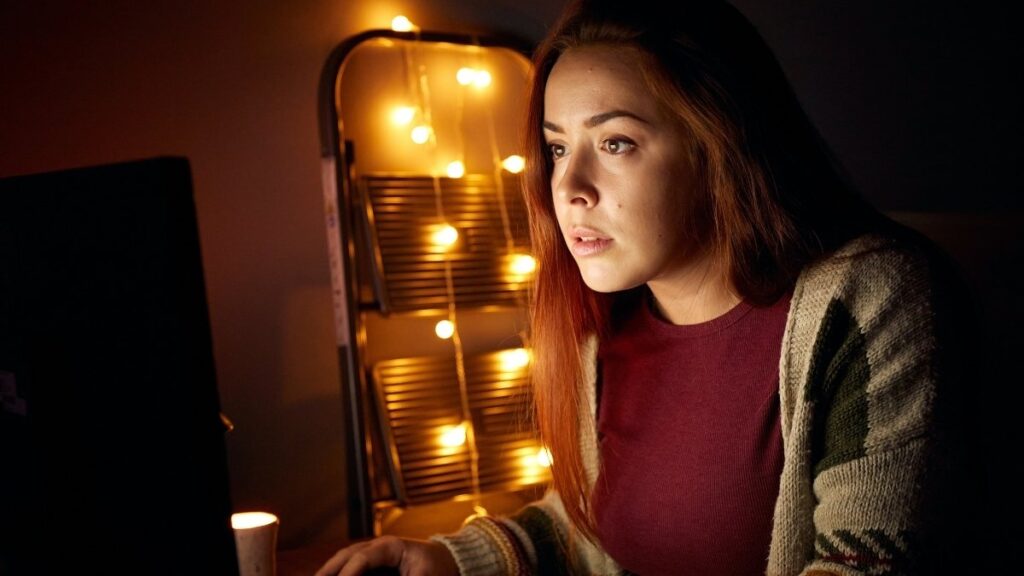
Avoid glare at all costs. Position your computer screen perpendicular to windows. Use blinds to control natural light. If you see reflections on your screen, adjust the angle.
Use task lighting for close work. Reading lights should be 3 times brighter than the surrounding area. Position the light so it shines on your book or paper, not in your eyes.
Choose warm light for evening reading. Cool, bright light in the evening can disrupt your sleep. Use warm, yellow light after sunset.
Position lights to eliminate shadows. If you’re right-handed, place your desk lamp on the left side so your hand doesn’t cast a shadow on your work.
Adjust lighting throughout the day. Your eyes need different amounts of light at different times. Use dimmer switches or multiple light sources you can control separately.
Computer screen brightness should match your surroundings. If your screen looks like a flashlight in a dark room, it’s too bright. If you squint to see it, it’s too dim.
10. Why Regular Eye Exams Can Save Your Sight
Here’s a scary fact: glaucoma can steal 40% of your vision before you notice any symptoms. Early detection can prevent 95% of vision loss from glaucoma.
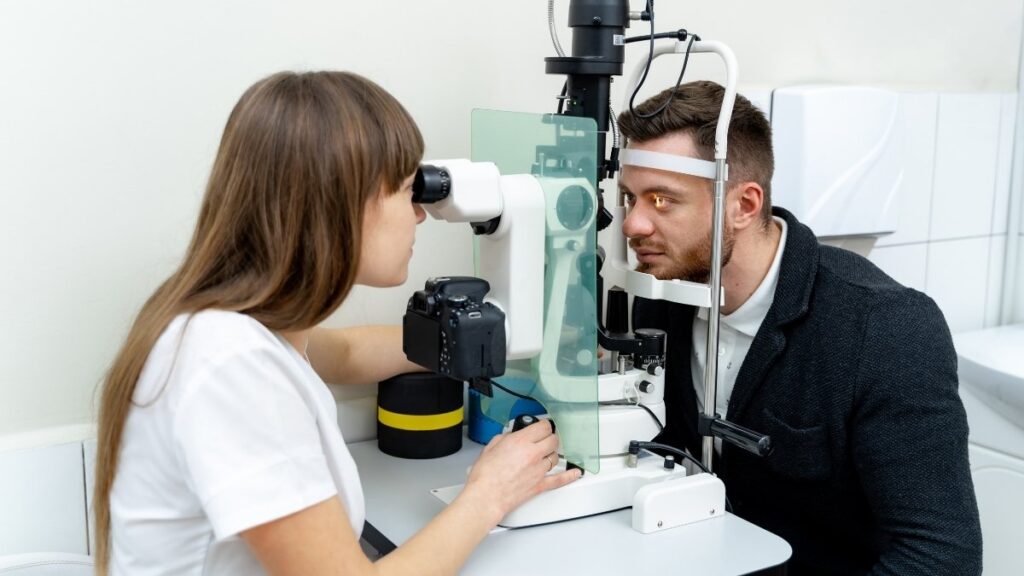
Get comprehensive eye exams annually after 50. Before 50, every 2 years is usually fine unless you have risk factors.
What a comprehensive exam detects:
- Glaucoma (high eye pressure that damages the optic nerve)
- Macular degeneration (damage to central vision)
- Diabetic retinopathy (diabetes-related eye damage)
- Cataracts (clouding of the lens)
Baseline measurements are crucial. Your eye doctor needs to track changes over time. What’s normal for one person might be abnormal for another.
Family history matters. If your parents or siblings have glaucoma or macular degeneration, you’re at higher risk. Tell your eye doctor about any family eye problems.
When to see a specialist: Your regular eye doctor can handle routine care. See a retinal specialist for macular degeneration or diabetic eye disease. See a glaucoma specialist if you have high eye pressure or optic nerve damage.
11. How Your Health Conditions Affect Your Eyes
Your eyes are connected to your whole body. Many chronic conditions can damage your vision if not controlled properly.
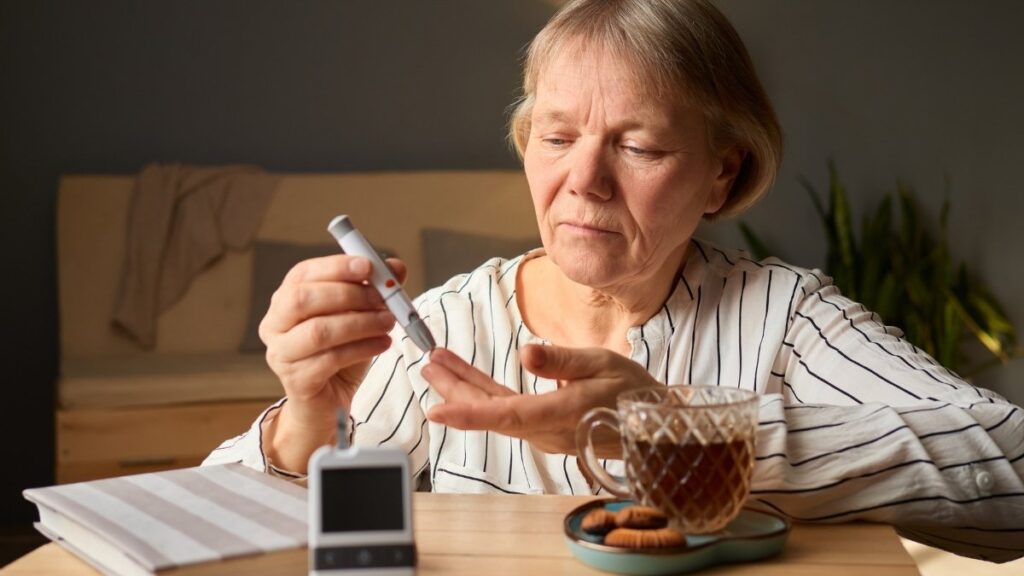
Diabetes is the leading cause of blindness in adults. High blood sugar damages the tiny blood vessels in your retina. Keep your A1C below 7% if possible. Get dilated eye exams every year, even if your vision seems fine.
High blood pressure damages retinal blood vessels. It can cause bleeding, swelling, and vision loss. Keep your blood pressure below 130/80. Take your medications as prescribed.
Autoimmune conditions like rheumatoid arthritis and lupus can cause eye inflammation. Some arthritis medications can also affect your eyes. Work with your rheumatologist and eye doctor together.
Common medications that affect vision:
- Antihistamines can cause dry eyes
- Blood pressure medications sometimes cause blurry vision
- Steroids can increase eye pressure
- Some antidepressants affect tear production
Never stop taking prescribed medications without talking to your doctor first. Most medication side effects on vision are temporary or manageable.
12. How Stress Hurts Your Eyes (And What to Do About It)
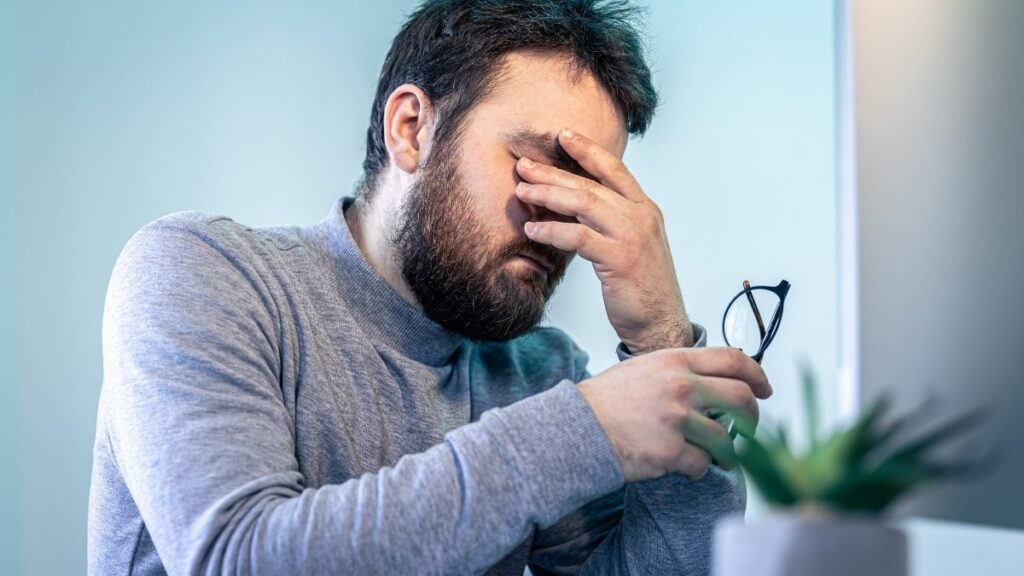
Chronic stress affects every part of your body, including your eyes. Stress hormones like cortisol can reduce tear production and increase eye pressure.
How stress affects your eyes:
- Reduces tear film quality
- Increases eye pressure
- Causes eye muscle tension and twitching
- Makes you more sensitive to light
Stress management techniques that help:
- Deep breathing exercises (try 4-7-8 breathing: inhale for 4, hold for 7, exhale for 8)
- Progressive muscle relaxation
- Regular meditation, even just 5 minutes daily
- Gentle yoga or stretching
The eye-brain connection is real. When you’re stressed, you tend to furrow your brow and squint. This creates tension around your eyes. Consciously relax your facial muscles throughout the day.
Take stress seriously. Chronic stress contributes to many eye problems. If you’re constantly anxious or overwhelmed, consider counseling or stress management classes.
13. How to Protect Your Eyes from Environmental Toxins
Air pollution, chemicals, and allergens can irritate your eyes and worsen existing problems.
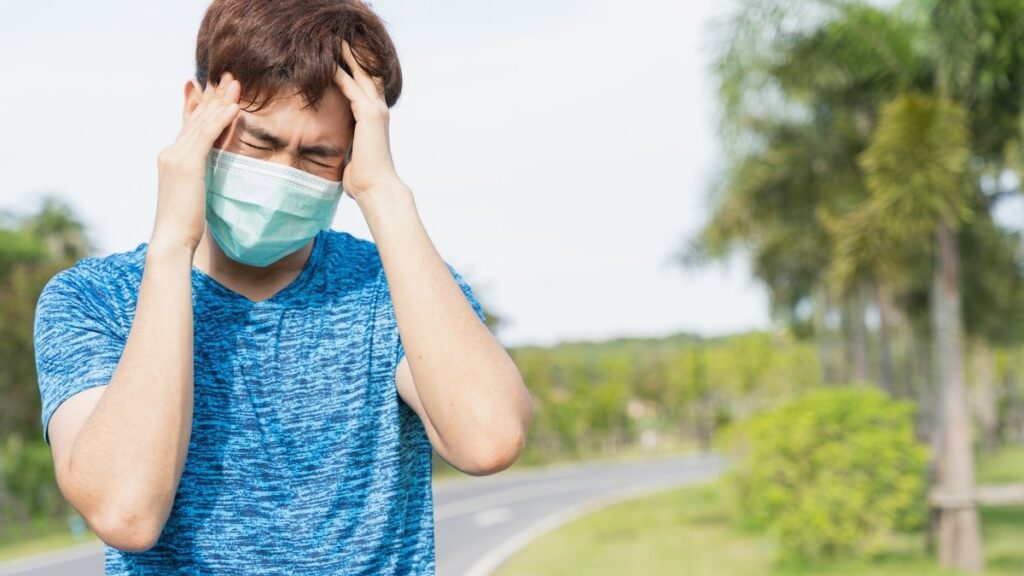
Poor air quality increases dry eye symptoms. Use air purifiers with HEPA filters in your home. Change furnace filters regularly.
Wear protective eyewear when:
- Using cleaning chemicals
- Doing yard work (especially trimming or mowing)
- Working in dusty environments
- Using power tools
Manage allergies proactively. Seasonal allergies can trigger eye inflammation. Use allergy medications before symptoms start, not after.
Common household irritants:
- Cigarette smoke
- Strong perfumes or air fresheners
- Cleaning products with ammonia
- Pet dander
Create an eye-friendly environment by using natural cleaning products when possible and keeping windows closed during high pollen days.
14. The Best Technology Tools for Eye Health (And Which Ones to Skip)
Technology can help or hurt your eyes. Here’s what actually works and what’s just marketing.
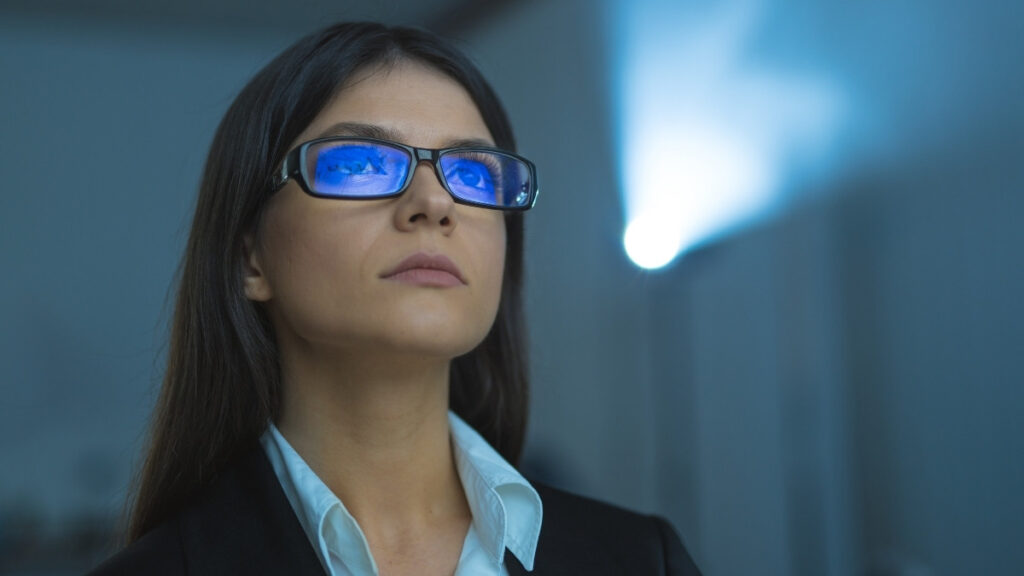
Blue light filters built into devices are free and easy to use. Turn on “Night Shift” on iPhones or “Blue light filter” on Android phones. These gradually reduce blue light as evening approaches.
Eye break reminder apps can help you remember the 20-20-20 rule. Look for simple apps that just remind you to take breaks. Fancy features aren’t necessary.
Screen adjustment tools help optimize your display. Apps like f.lux automatically adjust your screen’s color temperature throughout the day.
Vision testing apps have major limitations. They can’t replace professional eye exams. Use them only to track changes between appointments, not for diagnosis.
Don’t rely too heavily on technology. The best eye protection is still taking regular breaks and adjusting your environment properly.
15. When to See a Doctor Immediately (Warning Signs That Can’t Wait)
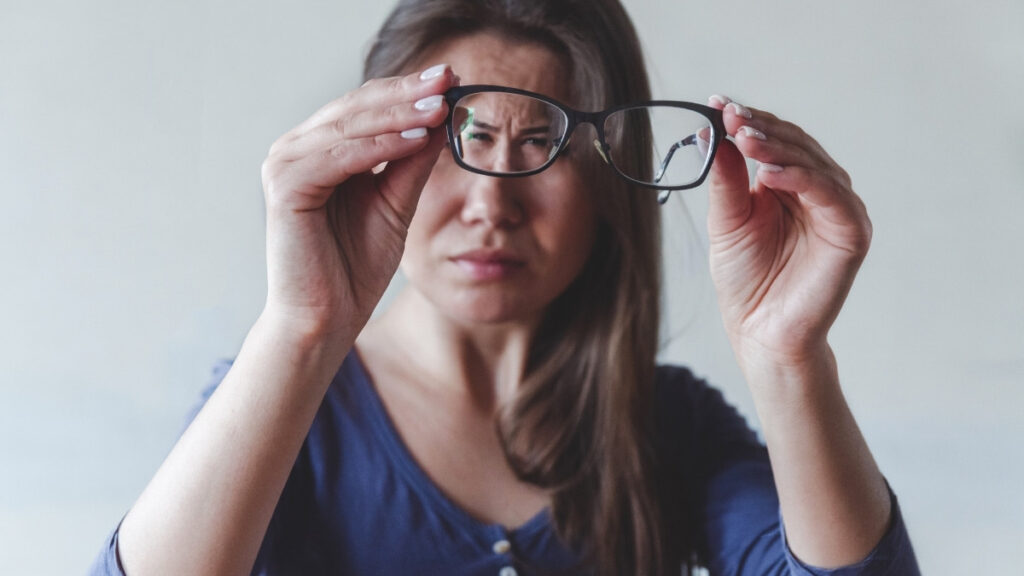
Some eye symptoms need immediate medical attention. Don’t wait for your regular appointment if you experience these.
Go to the emergency room immediately for:
- Sudden vision loss in one or both eyes
- Severe eye pain that doesn’t improve with over-the-counter pain medication
- Flashing lights or zigzag patterns in your vision
- A “curtain” or shadow across your visual field
- Double vision that comes on suddenly
See your eye doctor within 24-48 hours for:
- Gradual vision changes that develop over days or weeks
- New floaters, especially if accompanied by flashing lights
- Eye pain that’s moderate but persistent
- Sudden increase in light sensitivity
Regular symptoms that still need attention:
- Dry eyes that don’t improve with artificial tears after 2 weeks
- Headaches that seem related to eye strain
- Difficulty seeing at night that’s getting worse
Build a relationship with your eye care team. Having an established eye doctor means you can get faster appointments when problems arise.
Your Next Steps: Simple Changes That Make a Real Difference
You don’t need to overhaul your entire life to protect your vision. Start with these simple changes today.
Pick 2-3 strategies to start immediately:
- Schedule a comprehensive eye exam if you haven’t had one in the past year
- Set a phone reminder for the 20-20-20 rule
- Buy sunglasses that block 99-100% of UV rays
- Add leafy greens to one meal daily
Remember that consistency beats perfection. Taking breaks from your computer 80% of the time is better than never taking breaks. Eating fish once a week is better than never eating fish.
Small changes add up over time. The habits you build today will protect your vision for decades to come. Your 70-year-old self will thank you.
Most importantly: While aging does affect your vision, many changes can be slowed or managed through daily habits. You have more control than you think.
The combination of proper nutrition, lifestyle changes, and regular monitoring works better than any single approach. Start where you are, use what you have, and do what you can. Your eyes are worth the effort.

